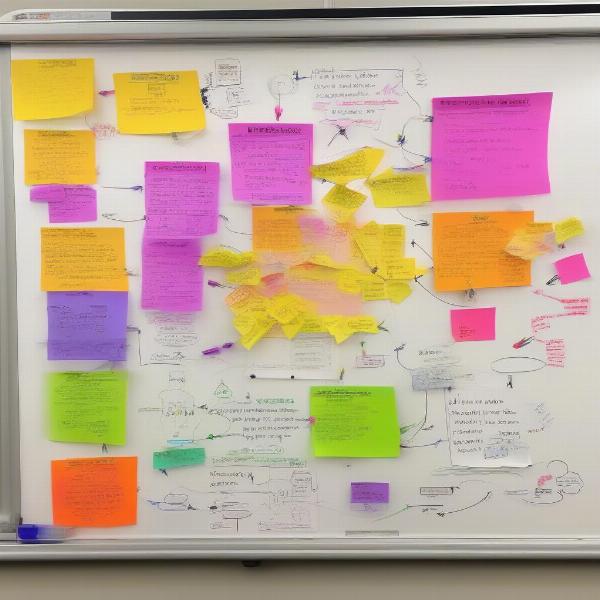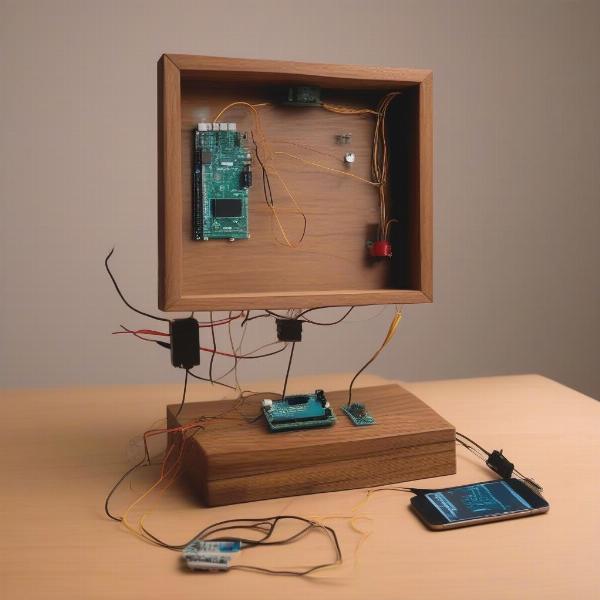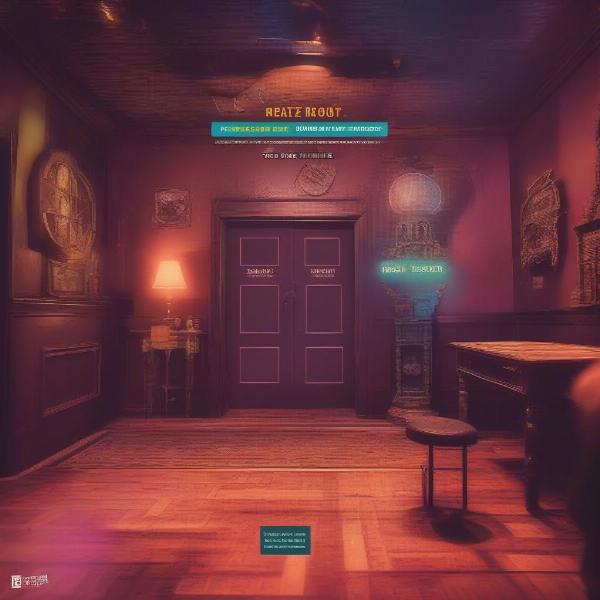Escape rooms have exploded in popularity, offering a unique blend of puzzle-solving, teamwork, and immersive storytelling. But have you ever wondered what goes on behind the scenes? Designing an escape room game is a complex but rewarding process. This guide will delve into the intricacies of creating a captivating escape room experience, from initial concept to final execution.
Similar to the challenges found in what are escape rooms games, designing one requires careful planning.
Conceptualizing Your Escape Room
The first step in How To Design An Escape Room Game is crafting a compelling narrative. What story do you want to tell? What is the overall theme? Whether it’s a pirate adventure, a sci-fi mystery, or a historical thriller, the theme will dictate the puzzles, props, and overall atmosphere. Define your target audience. Are you aiming for families, experienced escape room enthusiasts, or corporate team-building groups? Knowing your audience will help you tailor the difficulty and complexity of the puzzles.
Crafting the Narrative and Puzzles
Once you have a solid theme, develop a detailed storyline. This story will serve as the backbone of your escape room, connecting the puzzles and providing context for the challenges. The puzzles should be integrated seamlessly into the narrative. They should feel organic and relevant to the story, not just randomly thrown together. Variety is key. Incorporate different types of puzzles: logic puzzles, riddles, physical challenges, wordplay, and more. This keeps players engaged and caters to different skill sets. Consider the difficulty level. You want the puzzles to be challenging but not impossible. Playtest your puzzles thoroughly to ensure they are solvable within the given time limit.
 Escape Room Puzzle Design Brainstorm
Escape Room Puzzle Design Brainstorm
Designing the Room’s Environment
The environment plays a crucial role in immersion. The set design, props, lighting, and sound effects should all contribute to the overall atmosphere and enhance the story. Think about the sensory experience. How can you engage all the senses to create a truly immersive environment? Music and sound effects can add tension, excitement, and clues. Lighting can be used to create mood and highlight key elements. Props should be interactive and relevant to the puzzles. Don’t be afraid to get creative. Use unusual objects, hidden compartments, and unexpected twists to surprise and delight your players.
Much like the creative process behind how to make a survive the killer game in roblox, designing an escape room involves building an immersive world.
Testing and Refinement
Thorough testing is essential. Recruit playtesters who represent your target audience. Observe their progress, take notes on their struggles, and gather feedback on the puzzles, the story, and the overall experience. Refine your escape room based on the playtest feedback. Adjust puzzle difficulty, clarify clues, improve the flow of the game, and fix any technical issues. Testing and refinement is an ongoing process. Even after your escape room opens, continue to gather feedback and make adjustments to ensure a consistently engaging and enjoyable experience.
Incorporating Technology
Technology can enhance the escape room experience. Consider using electronic locks, sensors, projection mapping, or even augmented reality to add another layer of interactivity and immersion. Use technology strategically. Technology should enhance the gameplay, not overshadow it. Ensure that the technology is reliable and easy to use. Technical glitches can quickly ruin the immersion and frustration players.
Just as technology plays a crucial role in gaming, exemplified by what is my eyes deceive game based on, its strategic use can greatly enhance the escape room experience.
 Escape Room Tech Integration with Arduino
Escape Room Tech Integration with Arduino
Safety and Accessibility
Safety is paramount. Ensure that your escape room is safe for all players. Clearly mark emergency exits, install fire alarms, and have a plan in place for emergencies. Consider accessibility. Design your escape room to be accessible to players with disabilities. Provide alternative solutions for puzzles that require physical dexterity or specific sensory abilities. By prioritizing safety and accessibility, you ensure that everyone can enjoy the experience.
Marketing and Promotion
Once your escape room is ready, it’s time to get the word out. Develop a marketing strategy that targets your desired audience. Utilize social media, online advertising, and local partnerships to promote your escape room. Create a compelling website and online booking system. Make it easy for potential customers to find information about your escape room and book their experience.
Like finding exciting gaming experiences near you, such as a mall near you game, effective marketing ensures your escape room reaches its target audience.
 Escape Room Marketing on Social Media
Escape Room Marketing on Social Media
Conclusion
Designing an escape room game is a challenging yet incredibly rewarding endeavor. By carefully considering the narrative, puzzles, environment, technology, safety, and accessibility, you can create a truly unforgettable experience for your players. Remember to test thoroughly, gather feedback, and continuously refine your design to ensure that your escape room remains engaging and exciting for years to come. So, dive in, unleash your creativity, and start designing your own escape room adventure today!
FAQ
- What is the ideal length for an escape room game? Most escape rooms last for 60 minutes.
- How many puzzles should an escape room have? The number of puzzles can vary, but generally aim for 5-10 main puzzles with a few smaller, supporting puzzles.
- How do I choose a theme for my escape room? Consider your interests, your target audience, and what stories you want to tell.
- What are some common mistakes to avoid when designing an escape room? Making the puzzles too easy or too difficult, neglecting the narrative, and not testing thoroughly.
- What is the best way to market my escape room? Utilize social media, online advertising, and partnerships with local businesses.
- How can I ensure the safety of my players? Clearly mark emergency exits, install fire alarms, and have a plan in place for emergencies.
- How can I make my escape room accessible to players with disabilities? Provide alternative solutions for puzzles that require physical dexterity or specific sensory abilities.

